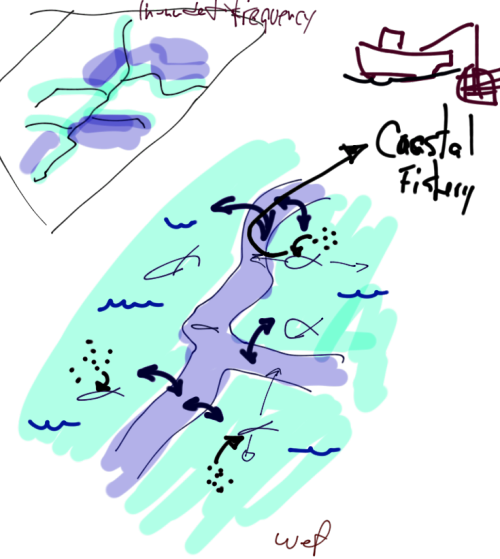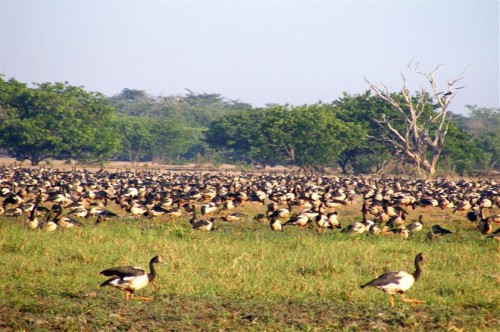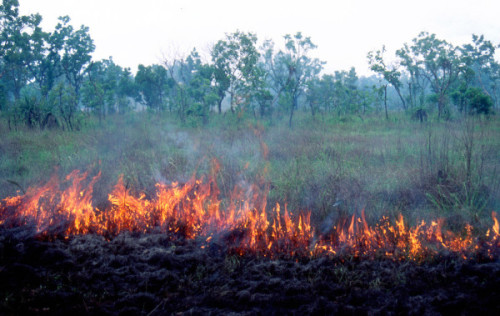Threats to traditional resources in Kakadu National Park, Northern Territory Australia
Heath Kelsey ·In the spring of 2014, Charles Darwin University in Australia's Northern Territory signed a Memorandum of Understanding (MOU) that allows us to exchange staff for extended periods. The goal is to increase our shared capacity for synthesis and communication of river and coastal management science. To begin flexing the cooperative spirit of the MOU, I will be traveling to Darwin (with family in tow) this January 2015 for about 3+ months. I will help in synthesizing results of several components of a 5-year National Environmental Research Programme (NERP) Northern Hub project on flood plain research related to important resources to traditional owners there. The work will distill key messages and recommendations on issues related to floodplain ecology and management in Kakadu National Park.
We began working on this last September 2014 with a series of meetings at both Charles Darwin University in Darwin, and at Griffith University in Brisbane. We were able to review the scope of the research activities, and began to design some new ways to communicate the results.

Issues that will be addressed in this synthesis project will include the importance of floodplain connectivity and biodiversity, and threats to valuable aquatic and cultural resources in these floodplain areas. The floodplains have great significance to traditional owners as areas where essential food resources are hunted and collected. This “bush tucker” includes Magpie Geese, turtles, and Barramundi (an iconic fish species), among others.

These resources are supported by a floodplain that is well-connected with the river, both hydrologically (water movement between floodplain and river channels), and ecologically, with fish and other fauna using both areas as habitat and sources of energy. Research shows that aquatic food webs are supported by algae that grow on solid surfaces. Research also shows that fish and crocodiles are using the rivers to traverse very long distances in the wet season, and this connectivity is important to sustaining these important populations.
The floodplains are under significant threat from invasive grasses and large terrestrial animals that alter primary productivity and habitat. Invasive grasses in particular inhibit access by traditional owners to harvest and hunting areas, and reduce suitable habitat for turtles, geese, and fish. The grasses form a monoculture, which reduces biodiversity and the patchy nature of natural landscapes. They also alter the historical fire regime so that fires burn much hotter than before, resulting in more animal and native plant mortality.

Add to this the threats of sea level rise and salt water intrusion, and there is potential for major detrimental changes to resources in the region. Over the course of the next 6 months, we will be designing innovative ways to communicate the nature of the issues and threats, as well as the recommendations for management that have resulted from this comprehensive research.
This is pretty exciting stuff from a personal and professional perspective. I continue to be amazed at the breadth of interesting and meaningful research that we get to connect with, the diversity of opportunities for innovation in science communication, and the creativity of our IAN staff that make us leaders in this area! I'm really looking forward to working with new friends and colleagues 2015!
About the author
Heath Kelsey

Heath Kelsey has been with IAN since 2009, as a Science Integrator, Program Manager, and as Director since 2019. His work focuses on helping communities become more engaged in socio-environmental decision making. He has over 15-years of experience in stakeholder engagement, environmental and public health assessment, indicator development, and science communication. He has led numerous ecosystem health and socio-environmental health report card projects globally, in Australia, India, the South Pacific, Africa, and throughout the US. Dr. Kelsey received his MSPH (2000) and PhD (2006) from The University of South Carolina Arnold School of Public Health. He is a graduate of St Mary’s College of Maryland (1988), and was a Peace Corps Volunteer in Papua New Guinea from 1995-1998.

